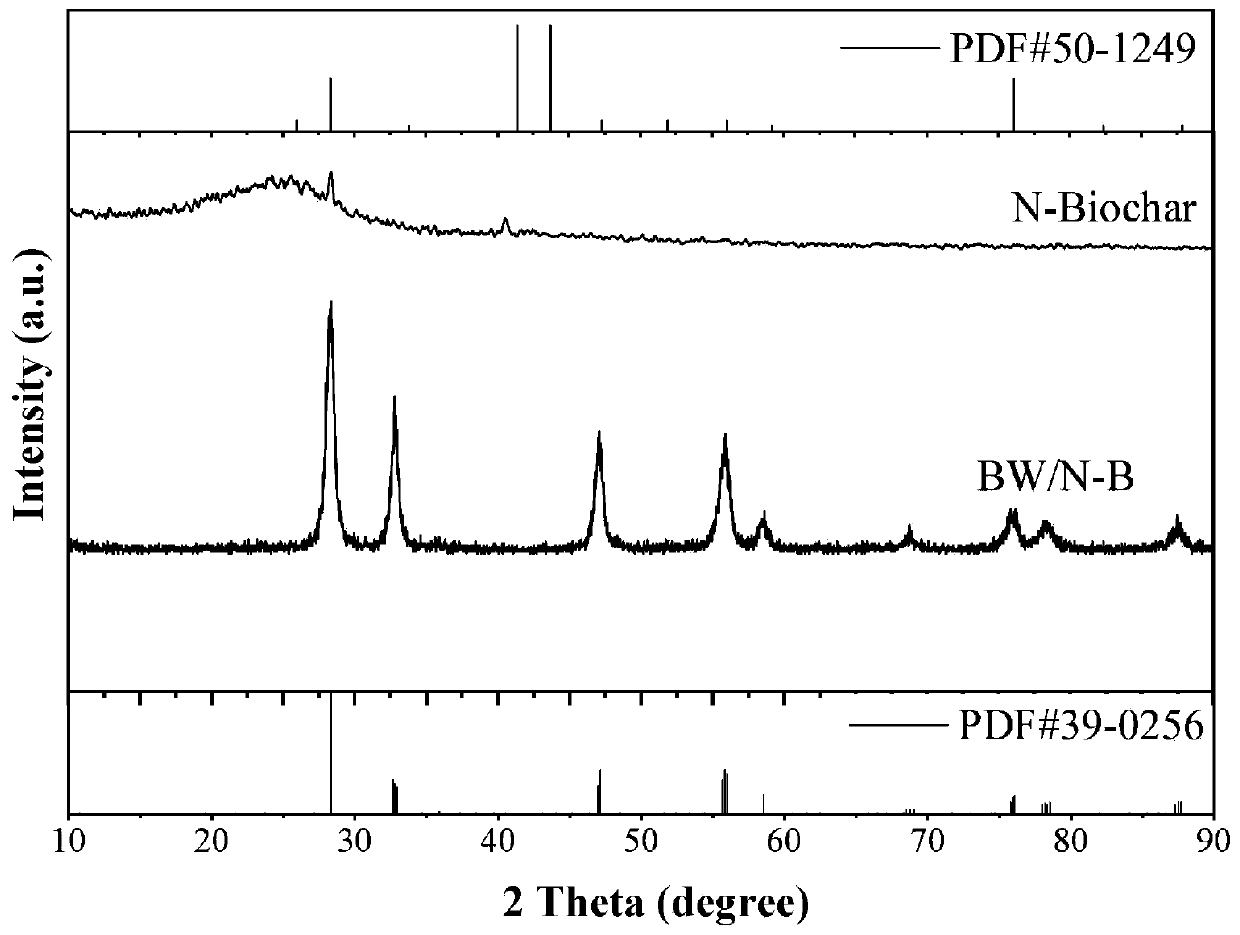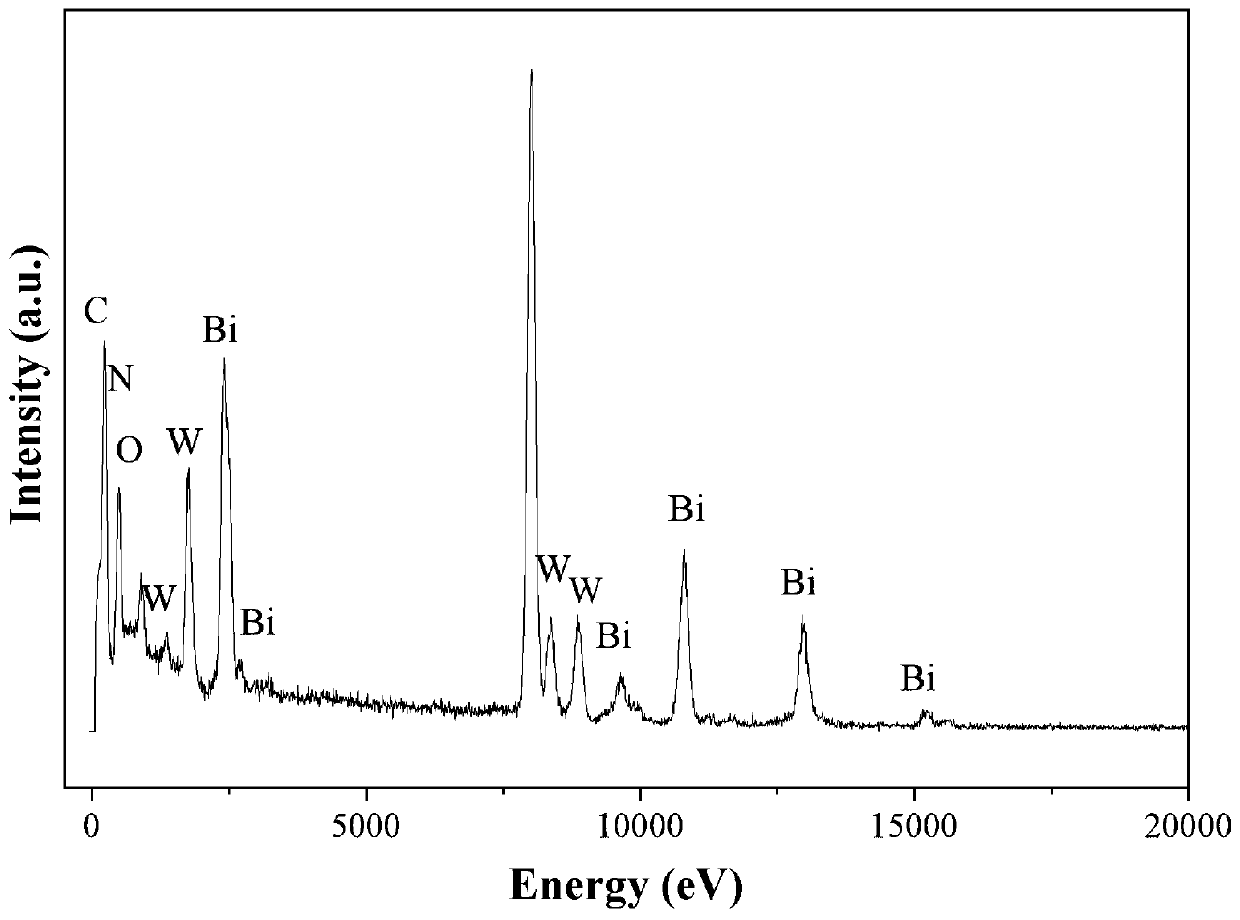Preparation method of corn straw biochar-Bi2WO6 photocatalyst for efficiently degrading organic pollutants
A technology of organic pollutants and corn stalks, applied in the direction of physical/chemical process catalysts, water pollutants, chemical instruments and methods, etc., can solve problems such as insufficient capacity, inability to degrade pollutants, weak response to visible light, etc., and achieve excellent The effect of conductivity, excellent stability, and good visible light catalytic activity
- Summary
- Abstract
- Description
- Claims
- Application Information
AI Technical Summary
Problems solved by technology
Method used
Image
Examples
Embodiment 1
[0020] Such as Figure 1-5 As shown, the present invention provides a kind of corn stalk biochar and Bi 2 WO 6 The preparation method of photocatalyst comprises the following steps:
[0021] (1) Preparation of new nitrogen-modified corn stalk biochar N-Biochar: use a crusher to crush corn stalks into powder, then soak 2 parts of straw powder in 1 part of urea solution, and bake at 80 °C after 12 h Dry, bake at 550°C for 2h under vacuum condition after drying;
[0022] (2) Novel biochar-based photocatalyst Bi 2 WO 6 Preparation: heat and dissolve 4 parts of sodium oleate in 40 parts of ethylene glycol solution, then dissolve 4 parts of bismuth nitrate in the mixed solution until transparent, and at the same time, dissolve 2 parts of sodium tungstate in 20 parts of ethyl alcohol In the glycol solution, after dissolving, add to the above mixed solution, continue to stir for 1h, put 0.05 parts of N-Biochar in 10 parts of ethylene glycol solution, after ultrasonic treatment fo...
PUM
| Property | Measurement | Unit |
|---|---|---|
| absorbance | aaaaa | aaaaa |
Abstract
Description
Claims
Application Information
 Login to View More
Login to View More - R&D
- Intellectual Property
- Life Sciences
- Materials
- Tech Scout
- Unparalleled Data Quality
- Higher Quality Content
- 60% Fewer Hallucinations
Browse by: Latest US Patents, China's latest patents, Technical Efficacy Thesaurus, Application Domain, Technology Topic, Popular Technical Reports.
© 2025 PatSnap. All rights reserved.Legal|Privacy policy|Modern Slavery Act Transparency Statement|Sitemap|About US| Contact US: help@patsnap.com



